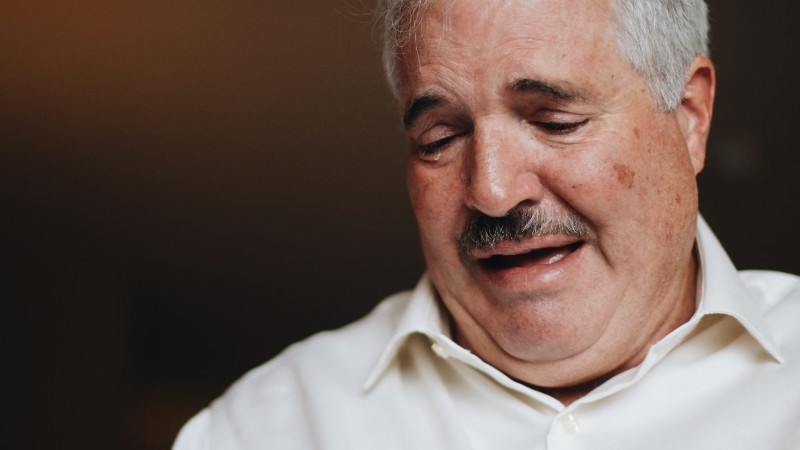Bruce Willis, the beloved star of iconic films like Die Hard and Pulp Fiction, has been navigating significant health challenges in recent years. As his family revealed his diagnosis of frontotemporal dementia (FTD), a complex cognitive disorder, they also reflected on his lifelong struggle with a severe stutter. This intertwining of conditions has shaped not only his career but also his family’s approach to his health and well-being.
Key Takeaways
Bruce Willis’ journey with frontotemporal dementia (FTD) and stuttering has been marked by significant health challenges, but his family’s approach to his well-being is rooted in honesty, transparency, and resilience.
- Bruce Willis was diagnosed with a stutter at a young age, which he overcame through acting, but later revealed a diagnosis of aphasia and then frontotemporal dementia (FTD).
- Emma Heming Willis, Bruce’s wife, has become an advocate for FTD awareness, working to raise awareness and provide support for those dealing with similar challenges.
- The Willis family is adapting to the new circumstances of Bruce’s condition, prioritizing self-care, and creating lasting memories together despite the adversity.
Early life and the battle with stuttering
Willis was diagnosed with a stutter at a young age. He struggled significantly with speech, stating in Bruce Willis: The Unauthorized Biography that “I could hardly talk. It took me three minutes to complete a sentence.” This challenge did not deter him; instead, it became a driving force in his life. A pivotal moment occurred during his college years when a theater instructor introduced him to methods that would transform his relationship with speech.
By memorizing lines, Willis found that he could act without stuttering, igniting his passion for performance. “When I became another character, in a play, I lost the stutter. It was phenomenal,” he recalled.
This discovery led to a flourishing acting career, propelling him into the Hollywood spotlight. However, even as he gained fame, the underlying issues with his speech continued to linger. Emma Heming Willis, who has been a steadfast partner, noted that Bruce’s lifelong stutter often masked more serious health concerns. She stated that “Bruce has always had a stutter, but he has been good at covering it up,” which initially clouded their understanding of his cognitive decline.
The onset of cognitive decline
In March 2022, Willis’ family announced that he would retire from acting due to a diagnosis of aphasia, a disorder affecting language comprehension and expression. This announcement came after a period of concern regarding his behavior and communication. A year later, they revealed a more specific diagnosis of frontotemporal dementia. FTD is an umbrella term for a group of disorders that impact the frontal and temporal lobes of the brain, leading to changes in personality, behavior, and language.
Emma explained that the initial signs of dementia manifested as changes in Bruce’s language. She noted that for Bruce, the condition started in his temporal lobes and then spread to the frontal part of his brain, ultimately attacking and destroying a person’s ability to walk, think, and make decisions.
Initially, she perceived these changes as a resurgence of his stuttering rather than a serious cognitive issue. As his language began to change, it seemed like it was just a part of his stutter, and she thought of it as simply Bruce’s way of communicating. She never imagined that it could be a form of dementia for someone so young.
Living with frontotemporal dementia
Understanding the progression of frontotemporal dementia has been crucial for Emma and the family as they navigate Bruce’s condition. FTD presents unique challenges compared to other forms of dementia. Patients may experience gradual deterioration of cognitive functions without significant memory loss, making the disease particularly insidious. Emma noted that “FTD whispers, it doesn’t shout.” She emphasized the difficulty in delineating where Bruce’s personality ends and the disease begins.
The emotional weight of this journey has been heavy for Emma, particularly as they strive to maintain a sense of normalcy for their two young daughters, Mabel and Evelyn. She has learned from their therapist that when children ask questions, they are ready to know the answers. Although the girls may not understand all the details, they are aware that their father is not going to get better.
Emma’s parenting approach in this context is rooted in honesty and transparency. She recognizes the importance of allowing her daughters to process the reality of their father’s condition while also seeking to create joyful experiences together. Reflecting on their plans, she acknowledges that they had many beautiful things they wanted to do as a family. The sudden change has forced her to reconsider their narrative and adapt to the new circumstances, and she is learning how to regain some control in this challenging situation.
Caregiving and support
As she navigates her husband’s diagnosis, Emma has become a passionate advocate for FTD awareness. She works alongside Bruce’s older daughters from his previous marriage to Demi Moore, as well as other families affected by the disease.
Together, they aim to raise awareness and provide support for those dealing with similar challenges. “I’m doing everything I can to raise awareness of FTD,” she stated, highlighting her efforts to create a registry in New York State for tracking diagnoses. This initiative aims to help families and health professionals better understand and address the needs of those living with FTD.
In addition to her advocacy work, Emma is developing a book intended for caregivers, highlighting the importance of self-care while supporting a loved one with dementia. She stresses that caregiving is not solely about looking after others; it also involves taking care of oneself. Experts and clinicians who have assisted her in navigating this journey have emphasized that one cannot be an effective partner for a loved one without also prioritizing personal well-being.
Embracing resilience amid challenges
Despite the challenges posed by Bruce’s condition, Emma is determined to focus on the positive aspects of their life together. She describes moments of joy amid the difficulties, noting that although their story may not follow the path they envisioned, it still contains “cracks of light.” Emma has embraced the reality of their situation and is learning to find strength and purpose in her role as both a wife and a caregiver.
Bruce’s diagnosis has also sparked conversations around the stigma associated with cognitive disorders, particularly for those who are still relatively young. Emma’s candidness about their experience is helping to shed light on the complexities of FTD, allowing others to understand the nuances of living with such a condition. “I wish I had heard from someone, like, ‘I know this feels horrible and very traumatic, but you’re going to be okay,” she shared.
Community and family support
Family support has been a cornerstone of Emma’s coping strategy. She expressed gratitude for the involvement of Bruce’s eldest children, who are actively engaged in caring for their father and supporting their stepmother through this journey. This blended family dynamic emphasizes resilience and unity, proving that love can prevail even in challenging times.
Emma’s commitment to keeping Bruce engaged with their daughters and fostering meaningful experiences highlights her dedication to preserving family bonds. “He is stable in his battle with the disease,” she noted, referencing comments from Bruce’s ex-wife Demi Moore regarding his condition. While FTD is a progressive illness with no cure, families can find ways to adapt and create lasting memories together.
Creating lasting memories despite adversity
Bruce Willis’ journey through stuttering and dementia is a poignant reminder of the complexities of life, health, and family. As his wife Emma shares their story, it becomes clear that while challenges abound, love and resilience can illuminate even the darkest paths. Through advocacy, education, and a commitment to each other, the Willis family exemplifies strength in the face of adversity, proving that while the story may change, the bonds of love endure.















